If you’ve spent your life driving on tar roads, you’ll find driving on dirt roads very different.
Loose road surfaces, washouts, corrugations, rocks, dust… they all add up to a very different experience. Don’t stress though, with a few tips you can safely drive on dirt roads without too many dramas.
We’ll go through some tips which will help you get to your destination safely.
- 10 Useful Tips For Driving on Dirt Roads
- In Summary
10 Useful Tips For Driving on Dirt Roads
1. Slow Down
The number one rule when driving on dirt roads is to slow down.
Why? Because you can’t stop as quickly on dirt as you can on tar. Plus there’s heaps of hazards you simply don’t encounter on tar roads. Things like washouts (big gutters across the road caused by rain), rapidly changing road surfaces, dust, large rocks and everyone’s favourite, corrugations!
And you’re more likely to encounter wildlife… roos, emus, camels, cattle, sheep, pigs, goats, wedge-tail eagles and so on. You really don’t want to hit a camel at 100km/h.
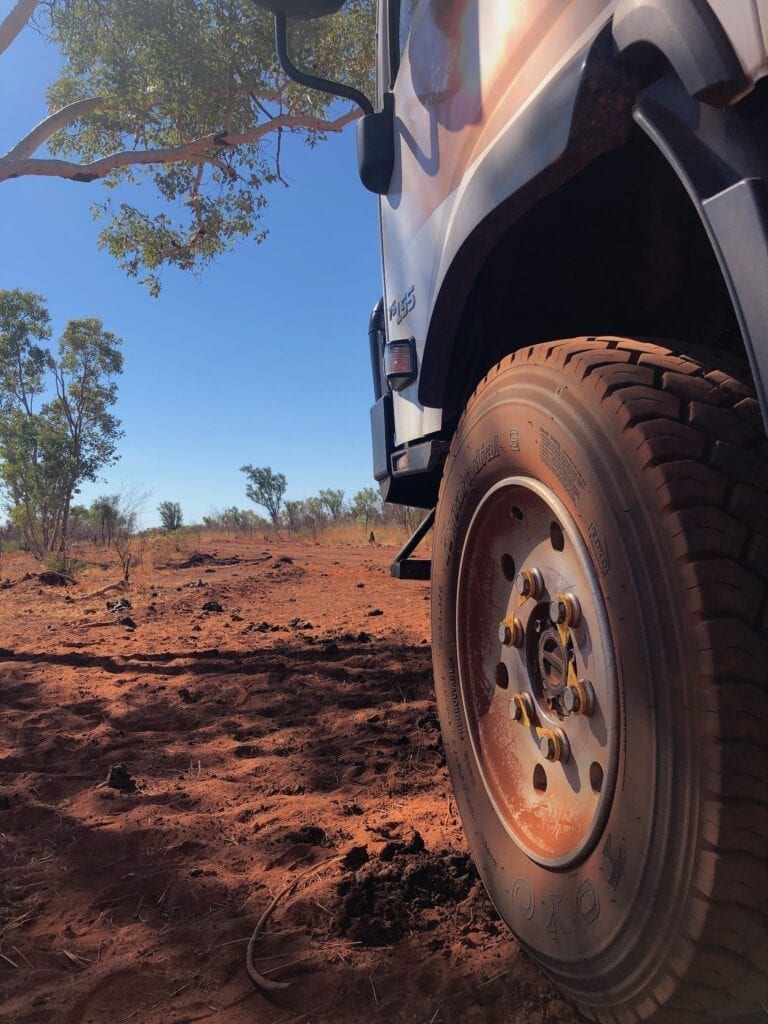
Why else should you slow down? To protect your vehicle and its tyres. You might not notice in your comfortable cab, but your vehicle cops a pounding on dirt roads. The faster you go, the more likely you’ll damage something or puncture a tyre.
2. Drive to Conditions
Yes, I know. You’ve heard this a million times before and it has kind of lost its meaning by now.
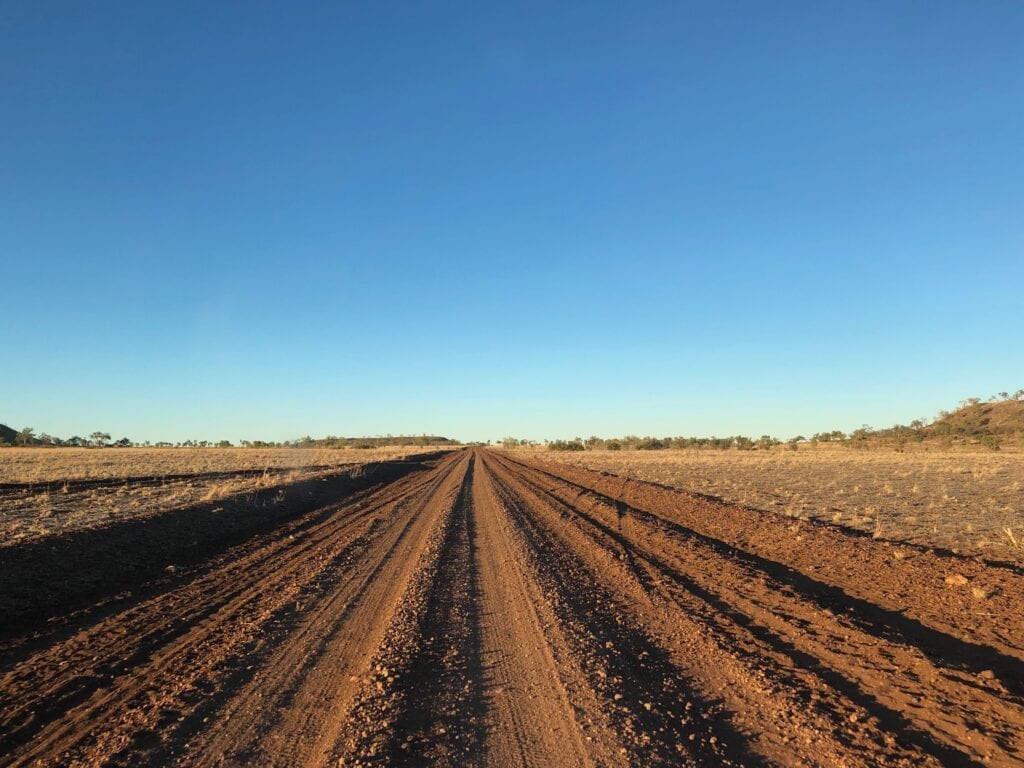
However, it’s true… and applies ten-fold on gravel roads. If the road’s rough, slow down. Yes, the 4WD ads might show your beast climbing over mountains of rock and conquering Mt Everest (okay, that’s a slight exaggeration). The truth is very different.
Any road-registered vehicle hates two things. Continual vibrations like corrugations, plus large impacts like hitting a washout at high speed tend to break, bend, loosen and snap components. And you guessed it… the faster you go, the worse the effects.
The only exception is corrugations, where you need to find a comfortable speed. More on this soon.
The second thing a road-registered vehicle hates is becoming airborne. Well, not so much becoming airborne… more the crash-landing at the end. You can do massive damage if you jump a vehicle that’s not designed to jump. Bent suspension components, body or even chassis damage are all possible.
So that’s why we say drive to the conditions. If the road’s rough or has lots of dips, take it easy. It might take a bit longer, but at least you’ll get there.
3. Slow Down For On-Coming Traffic
When you’re on the dirt, think of other road users. Slow down for on-coming traffic. This way you’re much less likely to throw up a rock into their windscreen. Hopefully they’ll do the same thing.
Follow a simple rule… the bigger vehicle has right of way. If a bigger vehicle is coming your way, be prepared to slow right down or pull off the road and stop. The bigger the vehicle, the harder it is for them to slow down quickly on dirt.
Not only this, on a rough road surface it’s really difficult for a larger vehicle like a truck to pick up speed again. They tend to bounce and buck over the rough stuff, which really isn’t too comfortable!
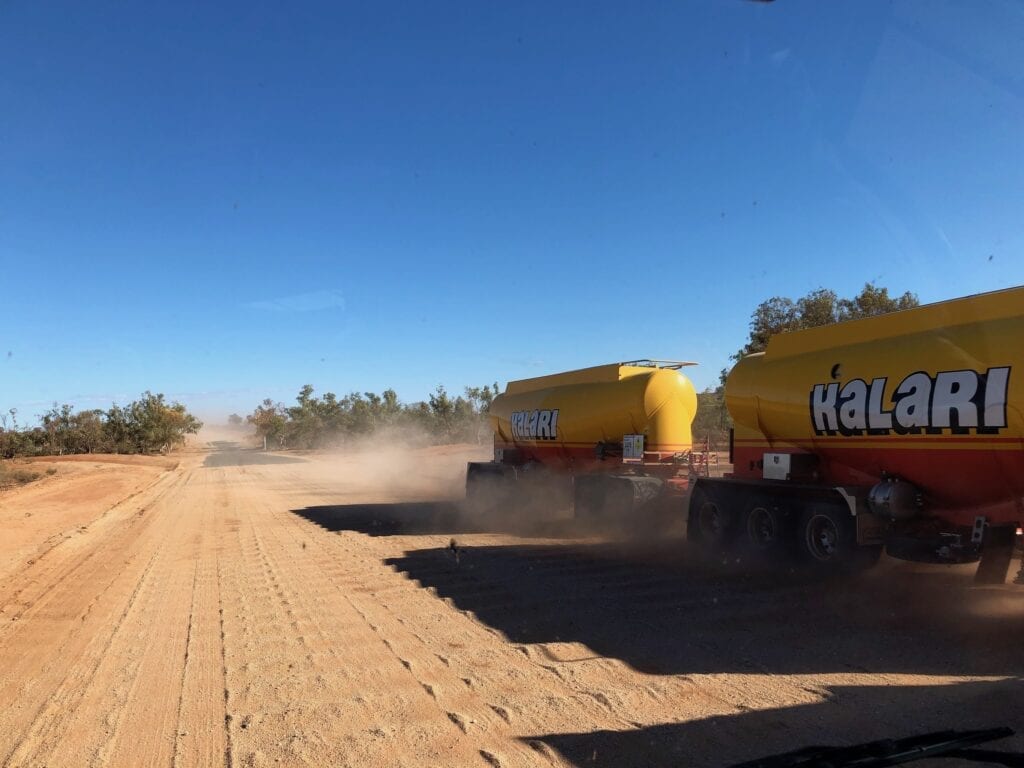
So be considerate and thoughtful of other drivers.
4. Pay Attention to Tyre Pressures
If you’re driving on dirt roads, lower your tyre pressures. As a really rough guide, if you normally run 40psi in your 4WD then try 28-30psi on dirt. This allows the tyres to absorb some of the harshness coming back from the road. Plus it allows them to flex around rocks and sticks, meaning a puncture is less likely.
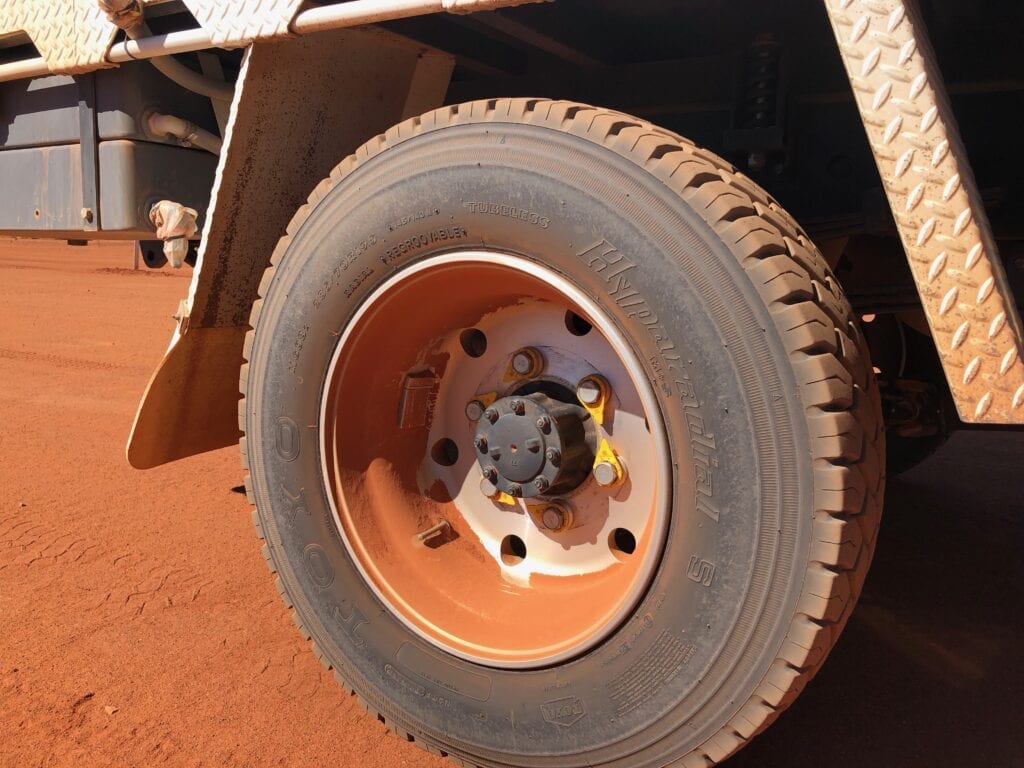
So you’ll get a smoother ride, won’t damage the vehicle as much and are less likely to get a puncture. There’s a lot more details on tyre pressures in this article we wrote for REDARC Electronics.
Millions of words have been written about tyre pressures. Just keep it simple. As I said, 28-30psi is generally a good starting point. You might need to go lower if the road if really rough and slow or you’re in sand or mud.
If you’re running a light truck like ours, you’ll need to experiment a bit based on the weight you’re carrying, type of tyres and so on.
And if you’re wondering what tyre pressures we run on our truck, go here for all the details.
5. Find The “Right” Speed on Corrugations
If you don’t know how to handle corrugations, you’ll likely be in for a teeth-chattering ride. Go too slow and you’ll feel every single corrugation. Go too fast and you’ll probably make an unplanned detour into the scrub!
There’s a happy medium.
Build up speed until you feel the corrugations smooth out. This usually happens around 70 to 80km/h depending on the type of vehicle, how big your tyres are and how big the corrugations are.
It’s easy for your speed to creep up. Keep an eye on your speed and only drive as fast as necessary to smooth out the corrugations.
One of the least comfortable experiences is corrugations on corners. You often have to slow down for a corner, only to be pounded to pieces. There’s not much you can do about this.
Far better to put up with the rough ride, than to meet an on-coming vehicle when you’re halfway around a blind corner on the wrong side of the road.
And sometimes you simply can’t avoid being shaken to pieces. You might be on a badly corrugated winding track, where a reasonable speed is out of the question. In these circumstances slow right down and put up with the punishment. We’ve had a few places where we’ve been down to walking pace! The Finke Track between Finke and Alice Springs springs to mind…
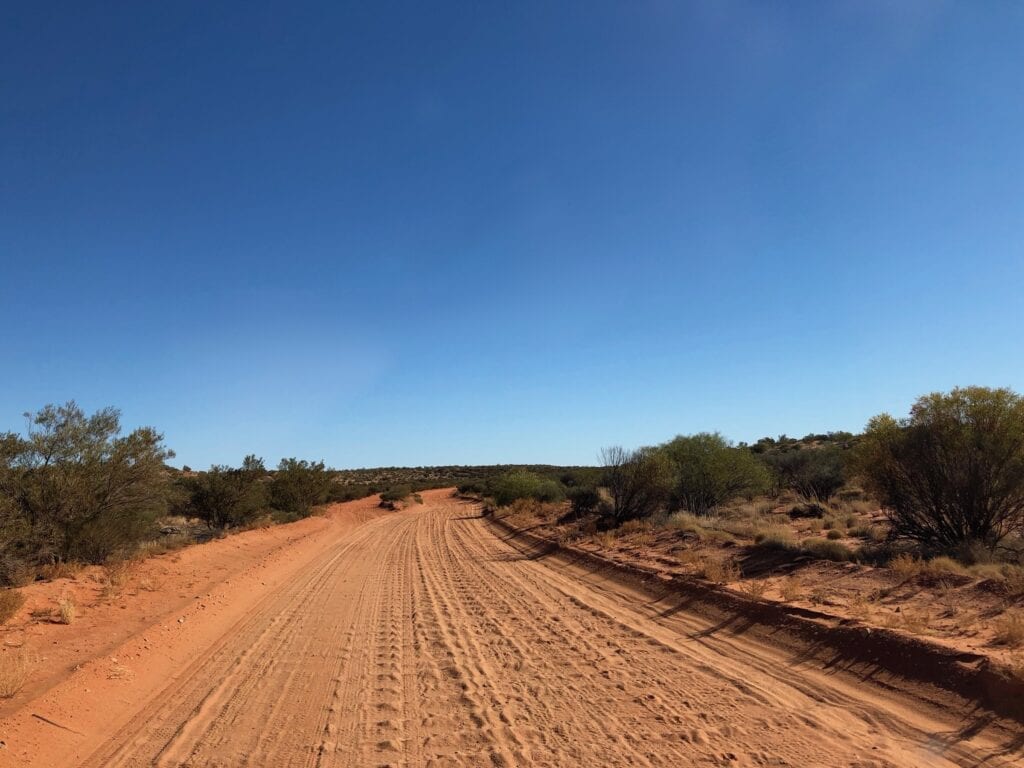
6. Drive Smoothly
What do you do when you’re walking across a slippery, wet floor? Do you run and make sudden changes of direction? Or do you walk and make sure every movement is smooth and fluid? I’m guessing the latter, unless you like slipping over!
Do the same on dirt roads. They’re way less grippy than tar roads.
Slow down and drive smoothly. It’s a simple as that. No sudden changes of direction, no standing on the brakes and no foot-to-the-floor acceleration.
Smooth, smooth, smooth. That’s all you need to remember.
And if an animal launches itself into your path, don’t swerve whatever you do. You’re far better hitting the animal than swerving wildly. Neither option is good, but a swerve is far more likely to get you into big trouble… like ending up on your roof in the scrub.
This leads directly into…
7. Read the Road Ahead
On tar roads, we become complacent. We tend to sit back and steer, take in the scenery and generally cruise along with not a care in the world.
You can’t do this on dirt roads. Concentrate, look ahead and read the road.
What do I mean by “read the road”? Look beyond your bonnet, see what’s coming up in the distance. Look for changing road surfaces like bulldust holes, dips, rough or rocky patches, mud, wildlife and so on.
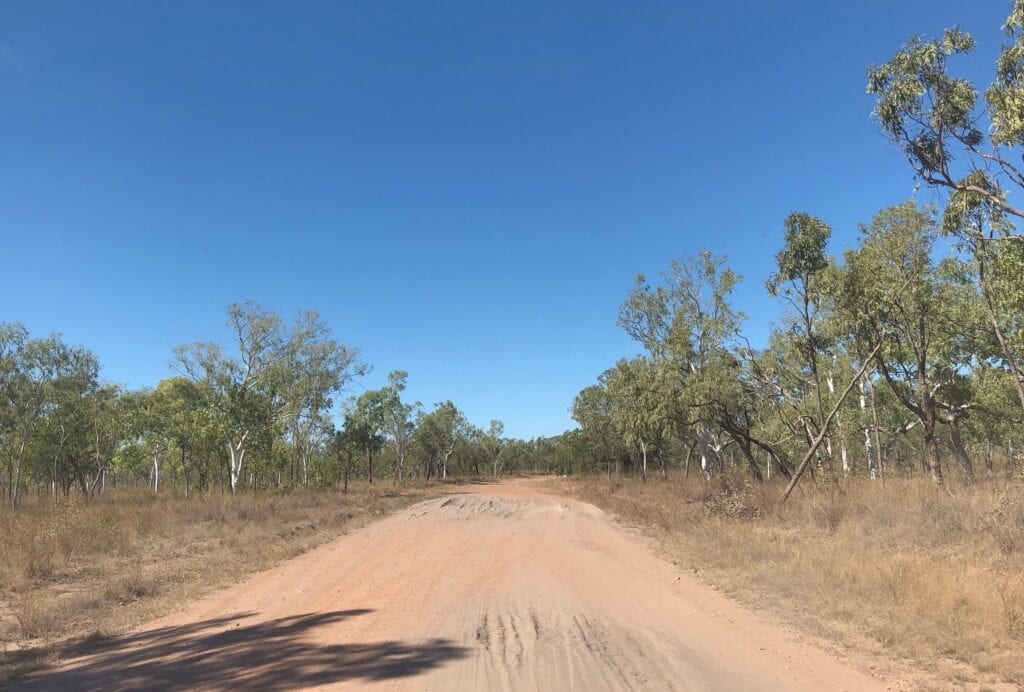
By looking ahead, you can prepare early. You have a chance to slow down before you hit a rough patch. And don’t race up to the rough patch then brake hard. Anticipate. Start slowing down early, by backing off the accelerator and letting your vehicle wash off speed.
Then when the rough part is behind you, accelerate slowly and smoothly. If you stand on the accelerator, you’ll simply bounce your driving wheels on the rough stuff. Not only does this make for a rough ride, you’re also damaging the road for the next person.
8. Avoid The Dangers of Dust
Dust goes hand in hand with dirt road driving. It can blind your vision. There’s 3 really important things you need to know.
Following Another Vehicle
If you come up behind another vehicle, stay out of their dust. Turn your headlights on so on-coming vehicles can see you. If you’re trying to overtake, try calling up the vehicle in front on your UHF radio. Between the two of you, you’ll figure out a safe way to overtake.
Whatever you do, don’t overtake blindly through a cloud of dust. It’s incredibly dangerous and has been the cause of many head-on collisions over the years.
Passing An On-Coming Vehicle
When you see an on-coming vehicle, slow down and be prepared to stop. If their dust is blowing across your side of the road, you’ll probably need to stop. Again, headlights on and take care.
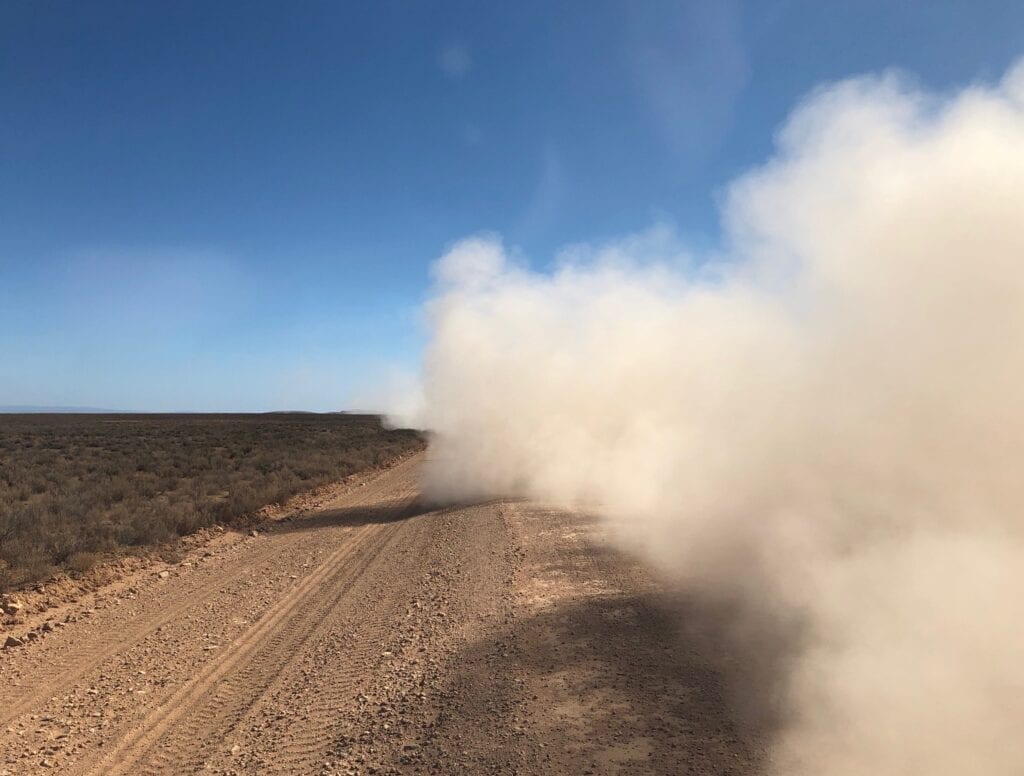
Being Passed By Another Vehicle
Always check your mirrors regularly for approaching vehicles. Either call them up on your UHF or slow down gradually to the shoulder of the road and let them past. A little consideration goes a long way in the bush.
9. Learn To Dodge Rocks
Dirt roads and rocks go hand in hand. If you’re on dirt, you’ll most likely encounter rocks. They vary from razor-sharp splinters as long as your finger to great lumps of rock as big as your head, depending on the terrain.
Don’t drive over them. Of course if the road is covered in rocks you’ll have to drive over some of them. But slow down and avoid the worst ones.
Your 4WD is not an indestructible dirt road-conquering weapon, despite what the manufacturers’ marketing departments would have you believe. Tyres hate rocks… rock love tyres.
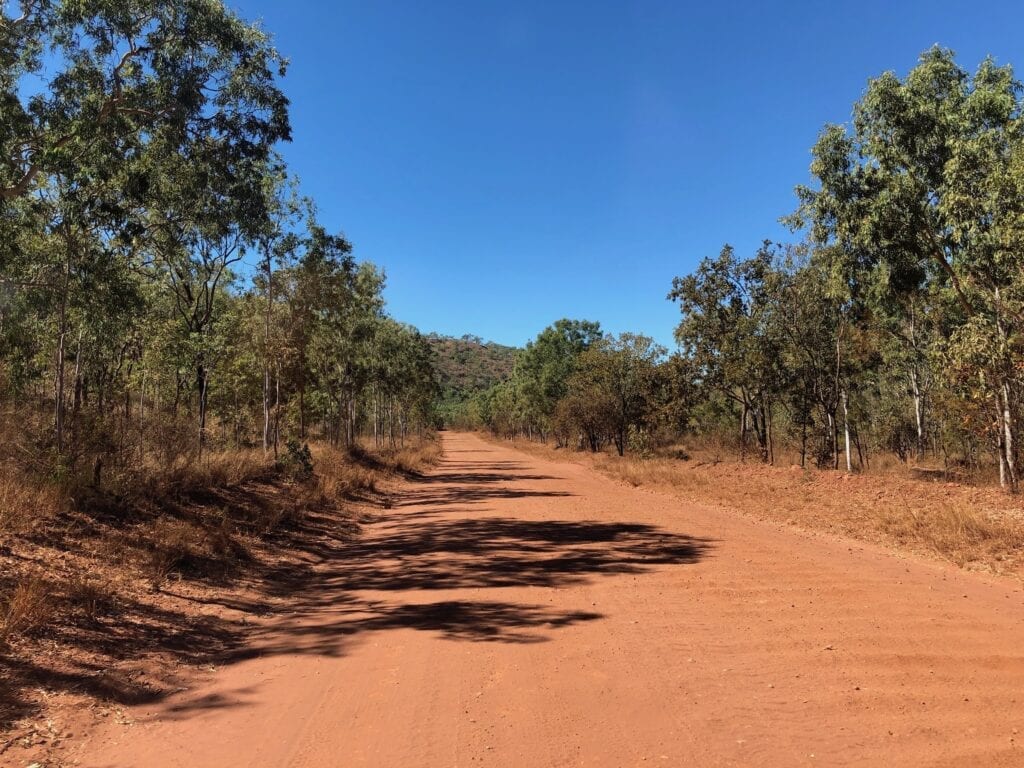
Not only tyres either. Rocks can do a whole lot of damage to the underside of your vehicle.
Slow down, avoid the worst rocks… and understand your vehicle is not indestructible.
10. When Not to Drive
Avoid dawn, dusk and at night. This is when wildlife are most active and you’ll increase the chances of a collision.
Your vehicle might have a bullbar, but that’s no guarantee your vehicle won’t be damaged. Kangaroos have a nasty habit of hopping straight into the side of your car, which is a bit disconcerting! And remember that a roo, pig, wombat or similar can do a whole lot of damage if they go under your vehicle.
If you have to drive at night, dawn or dusk then slow down. A quality set of driving lights is a priceless addition in these conditions. Keep a close eye on both sides of the road and if you have a passenger, get them to help you spot wildlife.
One other thing. If you do hit something, pull up and check if it’s still alive. Be careful, a roo or an emu can tear you to pieces. If safe to do so, put the creature out of its misery. Check roos and wombats for young in their pouches too.
While you’re stopped, checked your vehicle for damage.
In Summary
Driving safely on dirt roads is a skill you can learn. If you only take one thing from this article, it’s this… slow down!
Slow down, look ahead and drive smoothly.
Some of the most incredible places in Australia can only be found along dirt roads. Learning this skill will allow you to enjoy all our sensational country has to offer.
Hopefully we’ll see you out there somewhere!
For more Travel Tips, go here.

Get your Traveller’s Guides
… and a whole lot more at our FREE RESOURCES Page!
Any questions or comments? Go to the Comments below or join us on Pinterest, Facebook or YouTube.
Any errors or omissions are mine alone.

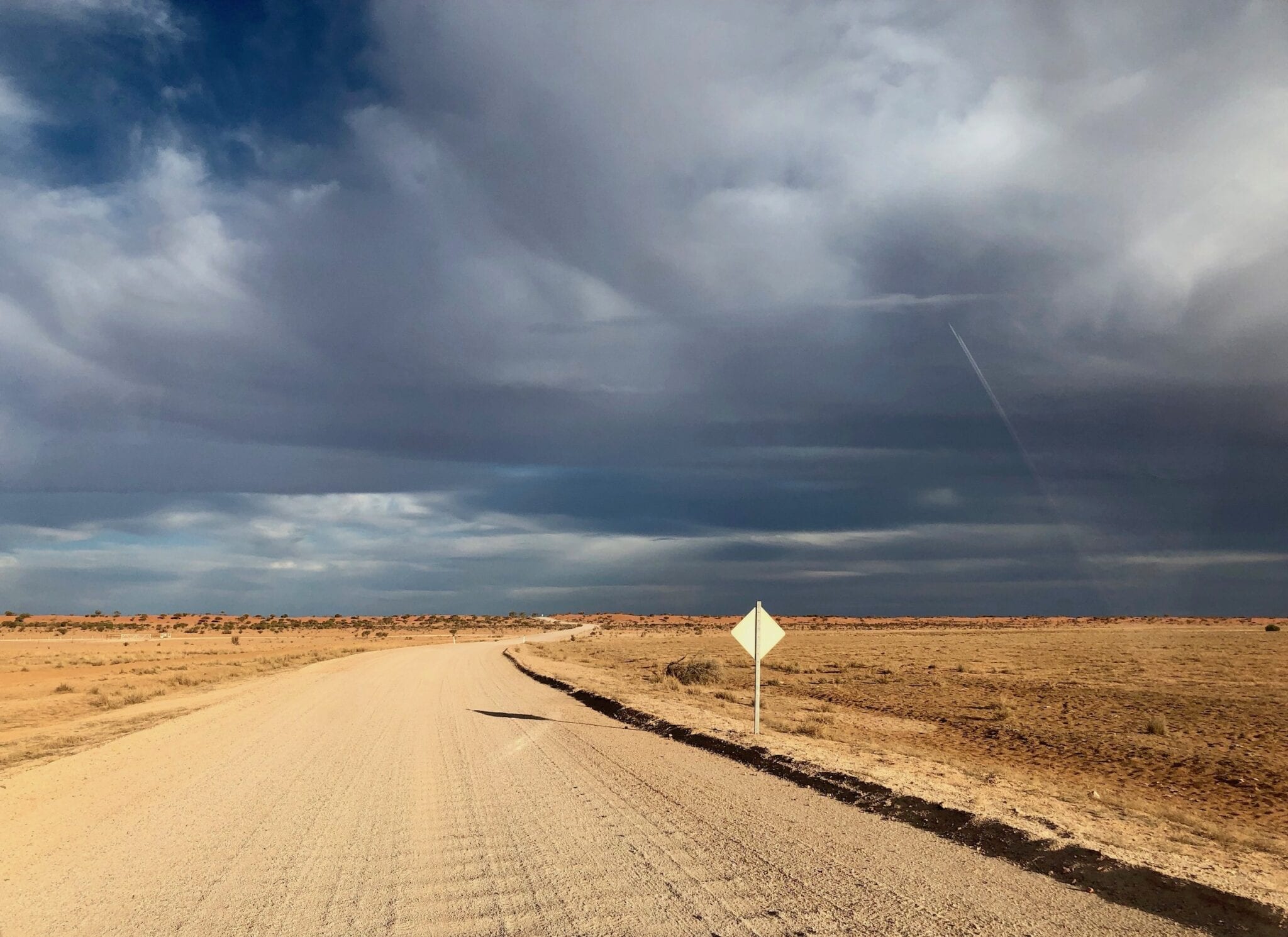
Good afternoon,
My name is Iker and I am studying how the corrugations affect different components in the driveline for my master thesis. I would really appreciate if you could give me an estimation of the height and distance between the bumps in this kind of road.
Thank you very much.
Hi Iker,
That’s a difficult question!
It depends a lot on the type of traffic and the type of soil. For example in the photo with the Kalari road train, the corrugations are about 50-100mm high and 1 metre apart. This is fairly typical on sandy roads with high speeds (80 – 100km/h) and heavy vehicle traffic. Then in the photo showing the “winding, sandy corrugated road…” the corrugations are about 50mm high and closer together, about 750mm. This track has only light traffic, cars and 4WDs.
Then in the last photo, that road is in rocky country with high speeds and a lot of light vehicle traffic. The corrugations here are also 50-100mm high and about 1 metre apart.
Some roads also have corrugations diagonally across the road. These are generally much larger than the “normal” ones and are the worst to drive over. Not only do you get bounced up and down, but also from side to side at the same time. It feels like you’re being tossed around like a rag doll. Very uncomfortable! I have no idea how these diagonal corrugations form. They tend to be in heavy clay soils for some reason.
Hope this helps. Cheers, Andrew
Driving on dirt roads can be fun, but like you’ve detailed here, safety plays a vital role. Not only should drivers tread slowly on dirt roads, but it’s important to account for the weather, as it can determine just how safe the terrain is to drive on.
Most definitely, great point Robert.
Cheers, Andrew
What a great advice, thank you this is very informative and helpful! I hope many can get a chance to read this blog as this is big help to ensure safety when driving in muddy road. This kind of situation is a great reminder that it is really important to take driving courses to broaden our knowledge and awareness about driving to ensure your safety and everyone on the road.
Good advice Nathan! Cheers, Andrew
I purchased good quality cheaper tyres that I can run flat if need be so that means I can drop the air pressure very low to drive over the corrugations and not damage the tyres .
The ideal speed on the corrugations for trucks is 90K to sit on top for a smooth ride .
Good idea Neville. Cheers, Andrew